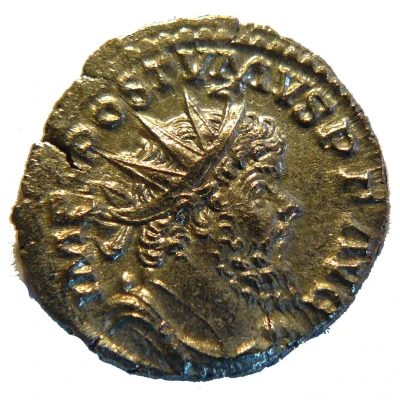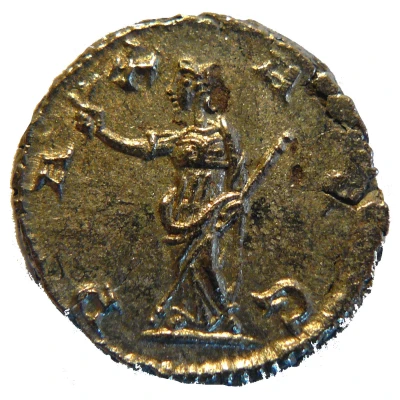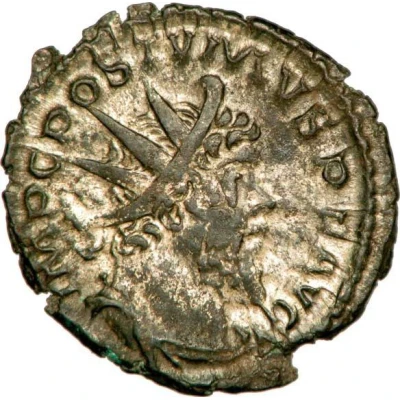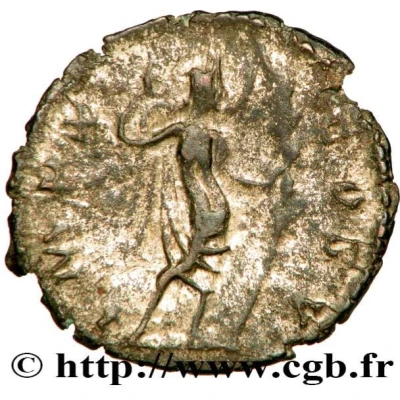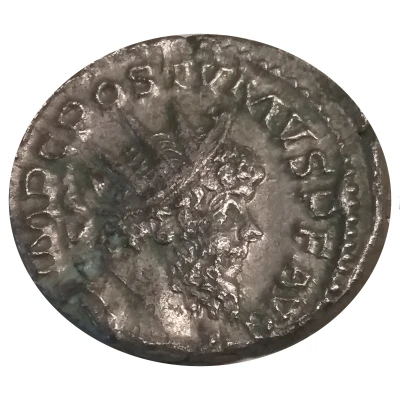
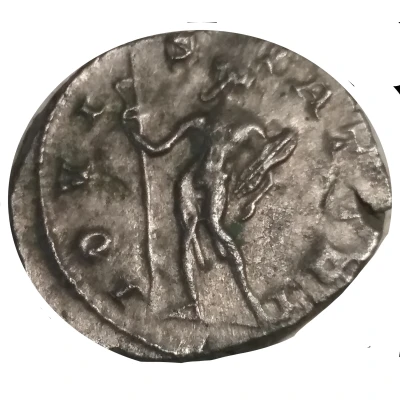

© Jorandm (CC0)
Antoninianus - Postumus IOVI STATORI; Treverorum
268 year| Billon | 4.45 g | 21.2 mm |
| Issuer | Gallic Empire (Roman splinter states) |
|---|---|
| Emperor | Postumus (260-269) |
| Type | Standard circulation coin |
| Year | 268 |
| Value | Antoninianus (1) |
| Currency | Antoninianus (260-274) |
| Composition | Billon |
| Weight | 4.45 g |
| Diameter | 21.2 mm |
| Thickness | 2.3 mm |
| Shape | Round (irregular) |
| Technique | Hammered |
| Orientation | Coin alignment ↑↓ |
| Demonetized | Yes |
| Updated | 2024-10-06 |
| Numista | N#130558 |
|---|---|
| Rarity index | 84% |
Reverse
Naked Jupiter, standing frontally, head to the right, holding a thunderbolt on his right arm and a long scepter in his left hand.
Script: Latin
Lettering: IOVI STATORI
Comment
Postumus has at his advent an important monetary stock in his province, of two monetary workshops in Trier and Cologne and contributions of silver-metal coming from Spain, which allows him at the beginning of his reign a monetary policy more healthy than that of Gallien. It emits very beautiful aurei, and until 268 of the antoniniens heavier and of better aloi than those of Gallien. It tries to support the bronze currency by creating a double sesterce, hardly heavier than the normal sesterce (22 grams against 20 grams) and recognizable with the radiated crown which it carries instead of the traditional imperial laurels. This experiment was a failure and stopped in 262. Soon, the ever-expanding military expenditure and the galloping inflation that affected the whole Empire caused the multiplication of "secondary" money workshops in Gaul, which manufactured counterfeit money. The Antoninians and the imitated bronzes, of mediocre quality of manufacture and of bad quality, were emitted in very great number, accelerating the inflationary tendency.The themes depicted on the reverses are those of a time of war, with Victories or Return to Felicity. Posthumus also issued coins dedicated to the Hercules of Deusone, which would prove the existence of a temple or a localized cult. However, to deduce that Posthumus was born in Deusone, identified with Diessen, is only an imaginary detail in the historical novel "In het licht van Omega" by Guus van Hemert.
Interesting fact
One interesting fact about this coin is that it was minted during a time of great turmoil and political instability in the Roman Empire. The Gallic Empire, which was a breakaway state from the Roman Empire, was established by Postumus in 260 AD and lasted until 274 AD. During this time, the empire faced numerous challenges, including invasions by barbarian tribes and internal power struggles. Despite these challenges, the Antoninianus coin remained a widely used currency throughout the empire, indicating the importance of trade and commerce during this period.
